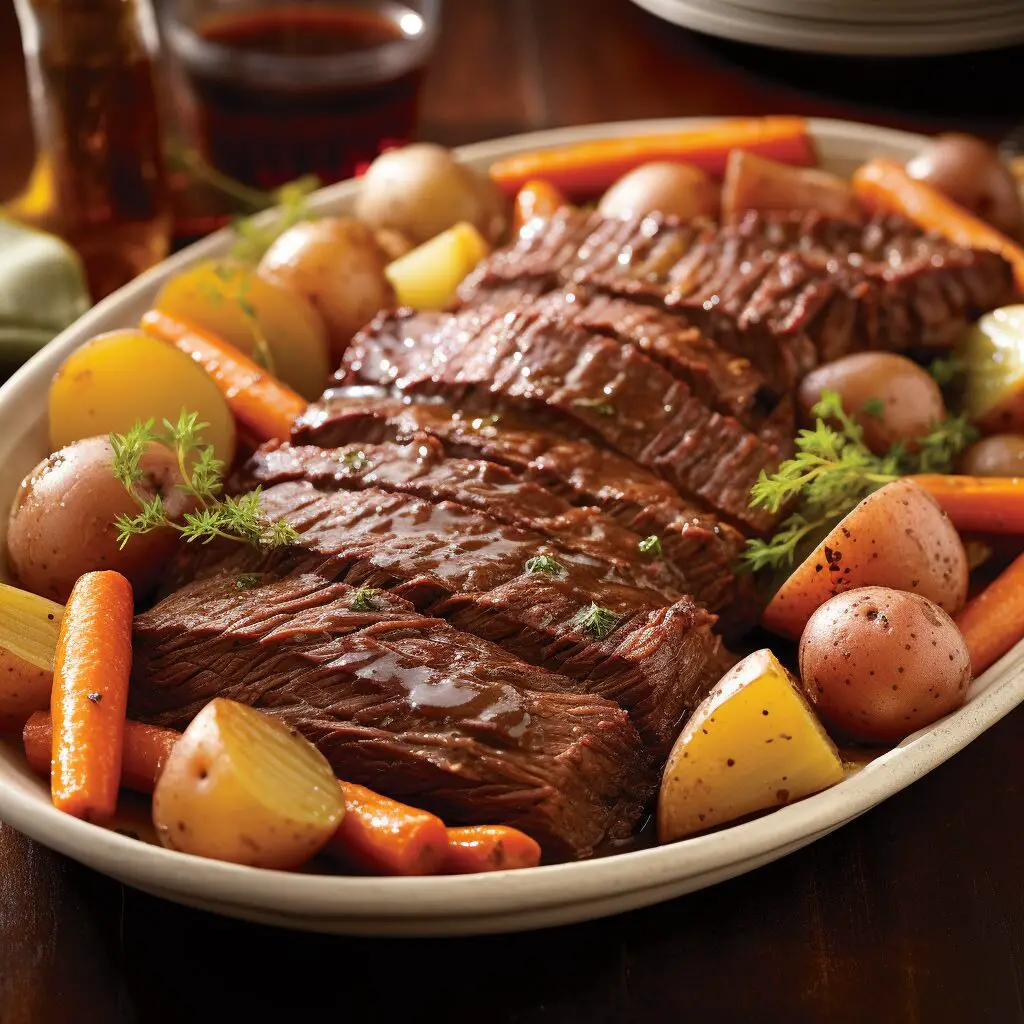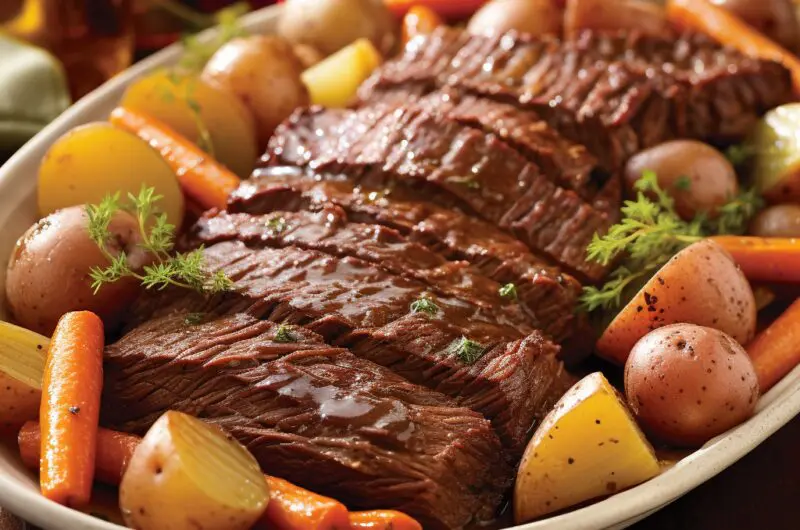In an era where quick and easy meals dominate, there’s a certain charm in revisiting the culinary treasures of the past. These dishes, often relegated to the memories of our grandparents, offer not just a taste of nostalgia but also a window into the simplicity and resourcefulness of earlier times.
Rekindling Culinary Memories
Many of these forgotten recipes were born out of necessity, using minimal ingredients to create hearty meals. They reflect a time when cooking was a slower, more deliberate process, often involving techniques and ingredients that have fallen out of favor in our fast-paced world.
One such dish, often remembered fondly by older generations, is the classic beef pot roast. A staple of Sunday dinners, this dish was slow-cooked to perfection, its rich flavors and tender meat evoking a sense of family and tradition.
Tip: To recreate this timeless dish, focus on quality ingredients and give yourself plenty of time for slow cooking.
Another treasure from the past is the humble vegetable stew. Packed with whatever was on hand or in season, this stew was not only economical but also a nutritious meal that could feed a large family. It’s a testament to the creativity and ingenuity of home cooks who made do with limited resources.
For a taste of old-world charm, consider the classic apple pie. This dessert, a symbol of American tradition, has undergone many transformations but its basic, rustic version remains a cherished memory for many.
The Art of Preserving and Canning
Preserving and canning were not just culinary practices but a way of life in the old days. From jams and jellies to pickles and canned vegetables, these methods were essential for winter survival and are a rich part of our culinary heritage.
Today, we can revisit these techniques, not just for their practical benefits but also for the unique flavors they bring. Preserving your own fruits and vegetables can be a rewarding experience, allowing you to enjoy summer’s bounty throughout the year.
Tip: Start with simple recipes like strawberry jam or cucumber pickles to ease into the world of home canning and preserving.
In addition to these dishes, let’s not forget the homemade breads and rolls. The smell of freshly baked bread wafting through the house is a memory many hold dear. Baking bread from scratch is a skill worth reviving, not just for its taste but for the satisfaction it brings.
Modern Twists on Classic Recipes
While we may cherish these old recipes, there’s always room for innovation. Modern cooking techniques and new ingredients can breathe new life into these classics, making them more accessible and appealing to today’s palates.
For instance, adapting the beef pot roast for a slow cooker can simplify the process, making it more feasible for busy lifestyles. Similarly, adding exotic spices or unique vegetables to the traditional stew can create a delightful fusion of old and new flavors.
Tip: Experiment with herbs and spices to add a contemporary twist to traditional recipes.
Finally, the art of meal presentation has evolved significantly. Plating these traditional dishes in a modern, aesthetically pleasing way can enhance the dining experience, blending the old with the new in a harmonious celebration of food and culture.
As we journey through the culinary landscapes of the past, let us not just recreate these dishes but also honor the stories and traditions they represent. By doing so, we keep a part of our history alive, connecting generations through the universal language of food.
Nostalgic Beef Pot Roast
Course: DinnerCuisine: American6
servings20
minutes3
minutes450
kcal3.5
hoursRediscover the heartwarming flavors of a classic Beef Pot Roast, a dish that evokes memories of cozy family gatherings.
Ingredients
3 lbs beef chuck roast
2 tbsp vegetable oil
1 large onion, sliced
4 cloves garlic, minced
4 carrots, peeled and sliced
3 cups beef broth
2 tsp Worcestershire sauce
1 tsp dried thyme
Salt and pepper to taste
Directions
- Season the beef chuck roast generously with salt and pepper. In a large pot or Dutch oven, heat the vegetable oil over medium-high heat. Add the roast and sear on all sides until browned, about 3-4 minutes per side.
- Remove the roast and set aside. In the same pot, add the sliced onion and minced garlic. Cook until the onion is translucent and the garlic is fragrant, about 5 minutes.
- Return the roast to the pot. Add the sliced carrots, beef broth, Worcestershire sauce, and dried thyme. Bring to a simmer, then reduce the heat to low. Cover and cook for about 3 hours, or until the meat is tender and falls apart easily.
- Once the meat is tender, remove it from the pot and let it rest for a few minutes. Meanwhile, skim any excess fat from the surface of the cooking liquid. Slice or shred the meat and serve with the vegetables and cooking liquid as gravy.
Notes
- For a richer flavor, deglaze the pot with a splash of red wine after cooking the onions and garlic.
- This recipe can also be adapted for a slow cooker. After searing the meat, place all ingredients in the slow cooker and cook on low for 8 hours.
- Leftovers can be stored in an airtight container in the refrigerator for up to 3 days.
Frequently Asked Questions
Q: Can I use a different cut of beef for this recipe?
A: Yes, you can use other cuts like brisket or round roast, but the cooking time may vary. Chuck roast is preferred for its marbling and tenderness after slow cooking.
Q: How can I make this recipe in a slow cooker?
A: After searing the beef, transfer it to a slow cooker along with all other ingredients. Cook on low for 8 hours for tender, fall-apart meat.
Q: Can I add other vegetables to the pot roast?
A: Absolutely! Potatoes, parsnips, and mushrooms make great additions. Add them according to their cooking times to avoid overcooking.
Q: What can I do with leftovers?
A: Leftover pot roast can be stored in the refrigerator for up to 3 days. It’s delicious in sandwiches, stews, or simply reheated with its gravy.


